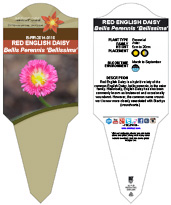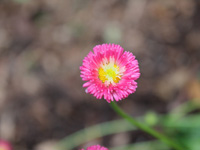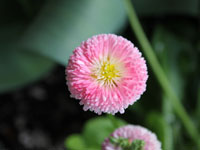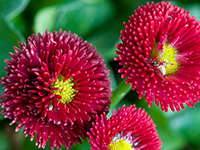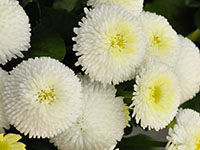![]()
Hybrid English Daisy is a hybrid variety of the common English Daisy, bellis perennis, in the aster family. Historically, English Daisy has also been commonly known as bruisewort and occasionally woundwort. However, the common name woundwort is now more closely associated with Stachys (woundworts). Most species of English Daisy are native to western, central and northern Europe, but widely naturalized in most temperate regions including the Americas and Australia. The name "daisy" is considered a corruption of "day's eye", because the whole head closes at night and opens in the morning. Chaucer called it "eye of the day". In Medieval times, bellis perennis or the English Daisy was commonly known as "Mary's Rose".
![]()
Hybrid English Daisy is commonly used as an ornamental plant in landscaping.
![]() Within the realm of rational and holistic medicine, bellis perennis has astringent properties and has been used in herbal medicine for many centuries. In ancient Rome, the surgeons who accompanied Roman legions into battle would order their slaves to pick sacks full of daisies in order to extract their juice, hence the origin of this plant's scientific name in Latin. Bandages were soaked in this juice and would then be used to bind sword and spear cuts. Bellis perennis is still used in homeopathy for wounds and after certain surgical procedures, as well as for blunt trauma in animals. Typically, the plant is harvested while in flower when intended for use in homeopathy. Bellis perennis flowers have been used in the traditional Austrian medicine internally as tea (or the leaves as a salad) for treatment of disorders of the gastrointestinal and respiratory tract.
Within the realm of rational and holistic medicine, bellis perennis has astringent properties and has been used in herbal medicine for many centuries. In ancient Rome, the surgeons who accompanied Roman legions into battle would order their slaves to pick sacks full of daisies in order to extract their juice, hence the origin of this plant's scientific name in Latin. Bandages were soaked in this juice and would then be used to bind sword and spear cuts. Bellis perennis is still used in homeopathy for wounds and after certain surgical procedures, as well as for blunt trauma in animals. Typically, the plant is harvested while in flower when intended for use in homeopathy. Bellis perennis flowers have been used in the traditional Austrian medicine internally as tea (or the leaves as a salad) for treatment of disorders of the gastrointestinal and respiratory tract.
Please note that MIROFOSS does not suggest in any way that plants should be used in place of proper medical and psychological care. This information is provided here as a reference only.
![]()
English Daisy may be used as a potherb in cooking. Young leaves can be eaten raw in salads or cooked, noting that the leaves become increasingly astringent with age. Flower buds and petals can be eaten raw in sandwiches, soups and salads. It is also used as a tea and as a vitamin supplement.
Please note that the edible properties of plants can change when creating hybrid varieties. MIROFOSS does not confirm or deny the edibility of hybrid plant species. MIROFOSS can not take any responsibility for any adverse effects from the consumption of plant species which are found in the wild. This information is provided here as a reference only.
![]()
English Daisy is native to Europe and has been widely naturalized in North America and Australia. English Daisy grows along roadsides, in fields, as well as lawns. English Daisy is suitable for: light (sandy), medium (loamy) and heavy (clay) soils and prefers well-drained soil. Suitable pH: acid, neutral and basic (alkaline) soils. It can grow in semi-shade (light woodland) or no shade. It prefers moist soil.
| Soil Conditions | |
| Soil Moisture | |
| Sunlight | |
![]()
Hybrid English Daisy is a herbaceous perennial plant with short creeping rhizomes and rosettes of small rounded or spoon-shaped leaves that are from 2cm to 5cm long and grow flat to the ground. The species habitually colonizes lawns, and is difficult to eradicate by mowing - hence the term 'lawn daisy'. Wherever it appears it is often considered an invasive weed. The flower heads are ray like, in the form of a pseudanthium, consisting of many sessile flowers about 2cm to 3cm in diameter, with red ray florets and yellow disc florets. Each inflorescence is borne on single leafless stems 2cm to 10cm, rarely 15cm, tall. The capitulum, or disc of florets, is surrounded by two rows of green bracts known as "phyllaries".
![]()
| Plant Height | 5cm to 20cm | 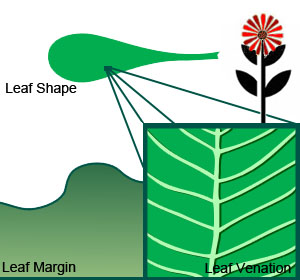 |
| Habitat | Fields, Roadsides, Lawns | |
| Leaves | Spatulate | |
| Leaf Margin | Undulate | |
| Leaf Venation | Pinnate | |
| Stems | Smooth Stems | |
| Flowering Season | March to September | |
| Flower Type | Small sized ray flowers | |
| Flower Colour | Red, Pink | |
| Pollination | Bees, Insects, Beetles, Self Fertile | |
| Flower Gender | Flowers are hermaphrodite and the plants are self-fertile | |
| Fruit | Small tapered seeds | |
| USDA Zone | 4B (-28.0°C to -31.0°C) cold weather limit |
![]()
No known health risks have been associated with Hybrid English Daisy. However ingestion of naturally occurring plants without proper identification is not recommended.
![]()
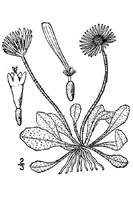 |
-Click here- or on the thumbnail image to see an artist rendering, from The United States Department of Agriculture, of English Daisy. (This image will open in a new browser tab) |
![]()
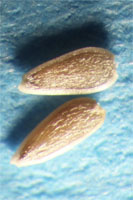 |
-Click here- or on the thumbnail image to see a magnified view, from The United States Department of Agriculture, of the seeds created by English Daisy for propagation. (This image will open in a new browser tab) |
![]()
Hybrid English Daisy can be translated into the following select languages:
| Arabic | الإنجليزية ديزي | Bulgarian | маргаритка | Chinese (Sim) | 雏菊 |
| Croatian | tratinčica | Czech | sedmikráska | Danish | |
| Dutch | madeliefje | Esperanto | Estonian | margareeta | |
| Finnish | päivänkakkara | French | marguerite | German | Gänseblümchen |
| Greek | μαργαρίτα | Hebrew | חִנָנִית | Hungarian | százszorszép |
| Italian | margherita | Japanese | デイジー | Korean | 데이지 |
| Low Saxon | Lithuanian | saulutė | Norwegian | ||
| Persian | گل افتاب گردان | Polish | stokrotka | Portuguese | margarida |
| Romanian | margaretă | Russian | маргаритка | Slovak | sedmokráska |
| Spanish | margarita | Swedish | Tagalog | ||
| Turkish | papatya | Ukrainian | Маргаритка | Vietnamese | giống cúc |

![]()
![]()
| Description | Daisy." The Columbia Encyclopedia, 6th ed., 2011. Encyclopedia.com |
| Folklore | The Plant-Lore and Garden-Craft of Shakespeare, by Henry N. Ellacombe. W. Satchell and Company, London, 1884 |
| Folklore | Howard, Michael. Traditional Folk Remedies (Century, 1987), |
| Biology | Stace, C.A. (2010). New flora of the British isles (Third ed.). Cambridge, U.K.: Cambridge University Press. ISBN 9780521707725. |
| Biology | Dickinson, T.; Metsger, D.; Bull, J.; & Dickinson, R. (2004) ROM Field Guide to Wildflowers of Ontario. Toronto:Royal Ontario Museum, |
| Image Rendering | USDA-NRCS PLANTS Database / USDA NRCS. Wetland flora: Field office illustrated guide to plant species. USDA Natural Resources Conservation Service. |
| Environment | National Audubon Society. Field Guide To Wildflowers (Eastern Region): Alfred A. Knopf. ISBN 0-375-40232-2 |
| Physical Identification | National Audubon Society. Field Guide To Wildflowers (Eastern Region): Alfred A. Knopf. ISBN 0-375-40232-2 |
| September 27, 2015 | The last time this page was updated |
| ©2025 MIROFOSS™ Foundation | |
 |
|

